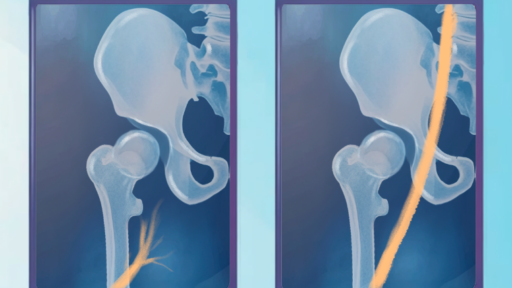What is Deep Vein Thrombosis (DVT) and Why Does It Matter?
Have you ever heard of deep vein thrombosis (DVT)? You might not think much about blood clots, but DVT is a condition you should know about. It happens when a blood clot forms in one of the deep veins—usually in the leg. Left untreated, DVT can lead to serious complications like pulmonary embolism (PE), where a clot travels to the lungs. But don’t panic! With the right care and advancements in treatment, most people recover well. Let’s break down the basics and explore how to treat deep vein thrombosis.
What Causes Deep Vein Thrombosis (DVT)?
DVT forms when blood clots in a deep vein, usually due to:
- Inactivity: Sitting for long periods (like during flights or car rides)
- Injury: Trauma to the vein from surgery or an accident
- Health conditions: Cancer, blood disorders, or autoimmune diseases
- Genetics: A family history of blood clots
- Lifestyle factors: Smoking or obesity
When the blood flow slows or gets blocked, clots can form—leading to DVT.
Common Symptoms of DVT
Here’s what to look for if you think you may have DVT:
- Swelling in one leg (especially the calf or thigh)
- Pain or tenderness, especially when standing or walking
- Redness or warmth around the affected area
- A heavy or tight feeling in the leg
If you notice these symptoms, it’s important to see a doctor quickly. Early detection can make a huge difference.
Why DVT Matters: The Risk of Post-Thrombotic Syndrome (PTS)
One of the biggest risks of untreated DVT is developing post-thrombotic syndrome (PTS). PTS can cause long-term leg pain, swelling, and skin changes, making daily activities difficult. Research shows that removing clots early can reduce your chances of developing PTS and improve your quality of life.
How to Treat Deep Vein Thrombosis
There’s been a lot of progress in DVT treatments. Here’s what you need to know:
1. Blood Thinners (Anticoagulants)
- Medications like heparin or rivaroxaban help prevent clots from getting bigger and new ones from forming.
- These are often prescribed for a few months, depending on your risk factors.
2. Mechanical Thrombectomy (Clot Removal)
- This procedure removes the clot using small, specialized devices.
- New technologies make it possible to remove clots in a single procedure, reducing the need for long, hospital-based treatments.
3. Compression Stockings
- These help reduce swelling and lower your risk of developing PTS.
4. Monitoring and Lifestyle Changes
- Stay active, drink plenty of water, and avoid long periods of sitting.
- Your doctor may recommend follow-up ultrasounds to check on your veins.
What’s New in DVT Care?
The latest trials and research are focused on refining DVT treatments. For example, studies like ATTRACT and CLEAR DVT have explored which patients benefit most from clot removal procedures. These trials revealed that patients with large clots in the iliac and femoral veins often have better outcomes when treated early with thrombectomy (clot removal).
However, not every DVT requires intervention. The key is identifying which patients benefit from aggressive treatment versus those who can be managed with medications alone.
When Should You See a Doctor?
If you experience sudden leg pain, swelling, or redness, contact your doctor immediately. If left untreated, DVT can lead to life-threatening complications like pulmonary embolism (PE).
Final Thoughts
Deep vein thrombosis (DVT) may sound intimidating, but with early diagnosis and the right treatment, you can prevent serious complications. Whether it’s through blood thinners, mechanical clot removal, or lifestyle changes, there are more tools than ever to help manage DVT.
If you’re concerned about your risk or experiencing symptoms, don’t wait—talk to your doctor. Understanding DVT is the first step in protecting your health and keeping your legs strong and healthy.




